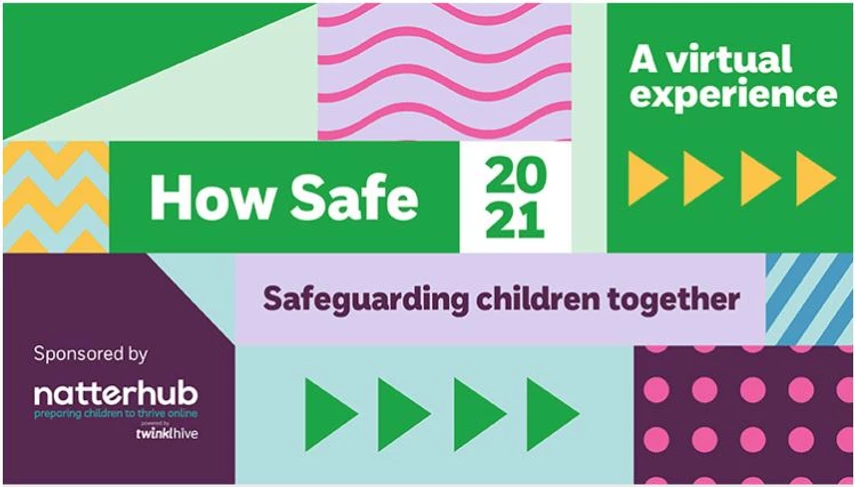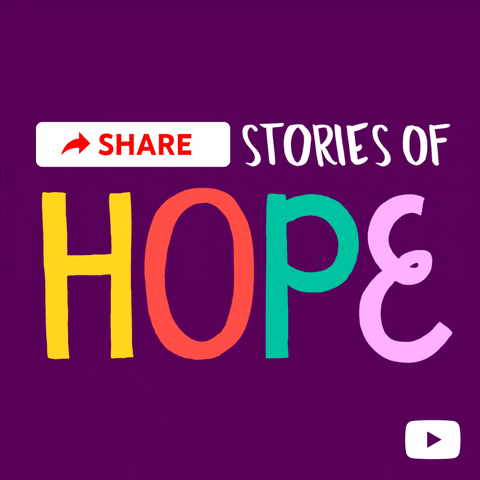This year, despite lockdowns, the NSPCC went the extra mile to ensure that their annual conference could still go-ahead – by moving it into the virtual space. The organisation’s Learning ‘arm’ rolled up its sleeves, and created an incredible, functional, educational, inspirational two-day webinar workshop. It was jam-packed with an impressive array of child safety experts who discussed the topic from multiple perspectives.
This year’s conference was titled “How Safe?” (sponsored by the super peeps at natterhub) – the topics included Protection, Education, Policy, Safeguarding, what things look like now, and where each industry is working to improve things in the future both off- and online.
We’re very proud to cite the NSPCC as one of our much-respected clients, and several of our team attended the conference – a super learning experience for all concerned. So, below we offer a digest of our team’s takeaways from the event. What intrigued us most and where we lay our hopes when it comes to future changes in Child Protection and Education in the digital environment.
This past year, lockdown moved the majority of us into spending an increased amount of time online – something that put an ever more important focus on the topic of safeguarding children in a virtual space. Long considered to be separate from the ‘real world’, today’s experts now agree that no matter the industry, the online and the physical world are inextricably linked, and will forever be as such.
Here are our top four takeaways from the event and how they relate to our work in Online Safety:
-
The online environment is as much a part of the real world as being ‘offline’ and must be approached as such.
-
A large disparity exists between different disciplines and their understanding of what children are doing online, the level of risk, and how to best service the child’s online experience.
-
The protection of children online must be balanced with enough space for them to take healthy risks in a safe environment.
-
The protection and wellbeing of the emotional labourer is just as (if not more so) vital to the overall success of your online community and social media as is the engagemet stats and the follower counts.

The highly-respected Sonia Livingstone – professor of social psychology at The London School of Economics, hosted the panel “Understanding Online Risks For Children” which brought together experts from Education, Legal, Policymakers, Criminology, Media Law and Communications working at the intersection of child rights and digital technology; and in particular the opportunities and risks in everyday life. The focus was to respond to the following question:
“How do they, as experts in their chosen field (s), conceptualise online risk? What factors underpin it inside and out of the digital domain, plus what is the child’s role in relation to online risk as they see it?”
In summary, each field of study agreed that the digital world is as much a part of a child’s reality as the real world. There is still much to explore and understand about how children interact online, how they utilise online communication and undertake risk. What does it look like to take risks safely, and how best to encourage positive behaviour whilst keeping themselves safe from others, and themselves.
For example, Julia Davidson – professor of criminology at the University of East London, admitted that [traditionally] there has been very little focus on children’s online behaviour, it has mostly been about victim and perpetrator up until now. Criminal studies have spent more time with ‘after the fact’ research rather than exploring the concept that some risky behaviour may be a normal part of child development. And what could or does it look like to teach appropriate behaviour while allowing children to explore risk taking?

And Elizabeth Staksud, Professor of Media and Communications shared the following:
“Risk perception is more on the [current] agenda rather than risk assessment. Risk perception (eg the idea that a risk might happen) can give the same symptoms to the individual, affect a family dynamic or influence our overall society in terms of regulation the same way as actual risk can. But not understanding the ACTUAL risks might be unhelpful. Uncertainty infused by worry is a dangerous mix that might have implications on all levels; individual, social, societal, national.”
Even when reviewing our (StrawberrySocial) clients’ online activity, while we moderate what feels like a significant amount of inappropriate behaviour, data shows that it’s a mere fraction of the total amount of activity within an online community at any given time (usually somewhere around the 10% mark).
And this is where we believe future studies will need to take focus in order to better service a child’s overall development.
In the meantime, those working on the front lines are still attempting to navigate what true risk, support and care can do over time to the emotional labour workers’ own mental health. This was delicately and respectfully explored in the panel “The Child I’ll Never Forget” hosted by Barbara Wren – Director at Wren Psychology Associates. The panel focussed on individuals working directly with children and the psychological effects of this work, however, it could easily be translated into Moderation and Community Management support.
“This is the session that hit me hardest,” says Rebecca Fitzgerald (StrawberrySocial CEO), “it demonstrated the work that goes on behind the scenes, work that is not sung from the rooftops (but should be). The strength shown by the people who work in this field is, quite frankly, humbling.”
The topic was explored through the lens of the following question:

What is the psychological challenge of working to safeguard children?
- Staying in touch with meaning
- Without being overwhelmed by it
- While staying ‘in role’
And how does the burden of that complexity get managed? What happens to the experiences that need to be put aside in order to make good decisions on behalf of the child?
Their answer, at least in part, is Storytelling.
Dr. Wren goes on to say that “[what] struck me over time is that the burden of responsibility becomes commonplace, almost invisible unless there’s a very specific case that requires review. [And the] courage that it takes to work in this area that you’re working in needs to be recognised more greatly and more often. It might not even be known by the person themselves, that the very nature of this work is a thoughtful step into the dark, which often takes a lot of courage”.
As I listened to each story told by very different individuals, working in different areas of child support, I recognised similar views and feelings that many of us have when running online moderation support. In particular, when escalating anything of concern, regardless of the scenario (whether child or adult), we usually don’t know how it will turn out. And Dr. Wren argues that there’s a realism in the ‘not knowing’…
It’s a reminder that we operate in a world of uncertainties, and that’s okay. We can’t precisely calculate any outcome. Sometimes it’s good to explore the concept of helplessness, we do things, subtle things, will have more of an impact, and may be how we try to manage the feelings of helplessness.
Having a safe space to explore these stories and concepts is not only helpful, but necessary to the long-term mental health of anyone working with children; be it online, or anywhere else.
To find out more about the NSPCC’s work – check out:
- The NSPCC website
- Online safety guidance
- NSPCC Learning Training
- “How Safe?”



 April 22, 2021
April 22, 2021  Share This Post
Share This Post